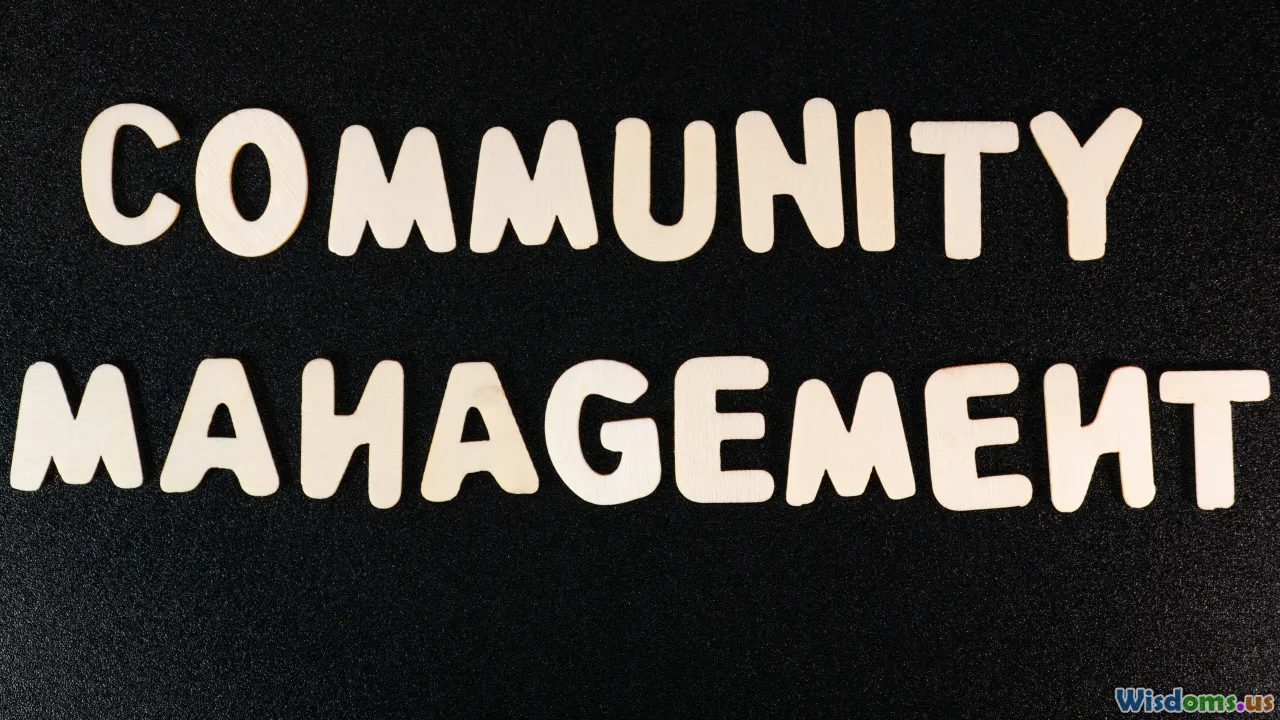
Is Stronger International Law the Answer to Tackling Terrorism
29 min read A strategic analysis of whether stronger international law can effectively counter terrorism, weighing enforcement gaps, sovereignty concerns, human rights safeguards, and pragmatic reforms for cross-border cooperation and accountability. (0 Reviews)
Terrorism evolves like a shape-shifting puzzle: it adapts to technology, exploits legal gray zones, and thrives where state capacity and public trust are thin. In this environment, governments reach for international law as a unifying tool. But can stronger international law really tame a threat that is partly ideological, partly criminal, and always politically charged? The answer is both yes and no—and recognizing the difference is the key to progress.
The Landscape of Modern Terrorism

Terrorism in the 21st century presents a complex map of actors and methods. Traditional organizations with identifiable command structures—such as al-Qaeda affiliates or Islamic State remnants—coexist with decentralized cells and lone actors radicalized online. Domestic terrorism and violent extremism have risen in several regions, while transnational networks retain the ability to coordinate logistics, financing, and propaganda across borders.
Key features of today’s threat landscape include:
- Convergence of crime and terror: Groups increasingly rely on illicit economies—kidnapping-for-ransom, illicit mining, extortion, trafficking of antiquities or wildlife—to fund operations. For instance, the Islamic State at its territorial height famously monetized oil, taxes, and antiquities; al-Shabaab has long extorted payments in Somalia.
- Digital acceleration: Encrypted communications, decentralized platforms, and short-lived messaging apps complicate monitoring. Propaganda is now micro-targeted, leveraging algorithms, and fringe forums metastasize narratives that can inspire lone-actor violence.
- Battlefield experience with global spillovers: Combat zones—from Afghanistan to the Sahel—serve as training and networking hubs. Fighters, weapons, and tactics travel, even when borders tighten.
- Hybridization with political conflict: Some groups hold territory or perform quasi-governance, blurring the line between insurgency and terrorism. Others act as proxies for state interests, complicating international accountability.
- Tactical diversity: From suicide bombings and vehicle attacks to critical infrastructure sabotage and cyber-enabled tools, the playbook is broad. Even low-tech methods—knives, vehicles—can be devastating.
This pluralism means no single legal instrument, however robust, can be a silver bullet. But it also clarifies where international law can help: standardizing norms, accelerating cooperation, and closing the worst loopholes.
What International Law Already Provides

Despite appearances, the international legal landscape is not a vacuum. It is dense with tools, albeit fragmented and unevenly implemented.
- UN Security Council mandates: Resolution 1373 (2001) requires states to criminalize terrorism financing, freeze assets, and improve intelligence sharing. Resolution 2178 (2014) addresses foreign terrorist fighters; Resolution 2396 (2017) strengthens border controls, watchlists, and screening. The 1267/1989/2253 sanctions regime targets individuals and entities associated with al‑Qaida/ISIL.
- Universal legal instruments: There are nearly twenty UN conventions and protocols against specific terrorist acts—hijacking aircraft, attacking diplomats, bombing public places, taking hostages, financing terrorism, and more. Each creates obligations to criminalize, prosecute, or extradite.
- International humanitarian and human rights law: When terrorism occurs within armed conflict, the law of armed conflict governs, including protections for civilians. Human rights obligations—due process, expression, privacy, non-discrimination—apply at all times, shaping counter-terrorism responses.
- Regional frameworks: The Council of Europe’s Convention on the Prevention of Terrorism and its Additional Protocol target recruitment and training. The European Arrest Warrant, Europol, and Eurojust facilitate rapid cooperation. In Africa, the 1999 OAU Convention on the Prevention and Combating of Terrorism and its protocols establish regional obligations. ASEAN has its 2007 Convention on Counter Terrorism.
- Practical cooperation: INTERPOL notices, mutual legal assistance treaties (MLATs), joint investigation teams, and liaison networks provide the pipes through which cases move.
These instruments have real bite when combined with political will. The problem is not that the law is missing—it’s that it is inconsistent, slow, and sometimes rights-insensitive.
Where the Current Framework Falls Short

International law’s biggest shortcoming is not the absence of rules but the absence of coherent, enforceable, and rights-respecting implementation.
- No universally agreed definition: States disagree on where political violence ends and terrorism begins, especially when national liberation or resistance claims are invoked. This undermines cooperation and allows for selective labeling.
- Fragmentation and overlap: Dozens of treaties cover specific acts but not the phenomenon holistically. Different regions maintain different standards for evidence, speech offenses, and membership crimes.
- Enforcement deficits: UN sanctions can be fast but have historically lacked due process (improved via an Ombudsperson for ISIL/al‑Qaida lists, yet still debated). Extradition and MLATs remain slow, especially for digital evidence.
- Rights risks: Vague laws can criminalize dissent; material support offenses can chill humanitarian work; mass surveillance and prolonged detention erode trust and violate obligations. Courts, from the European Court of Human Rights to the EU Court of Justice, have pushed back in prominent cases like Kadi (sanctions due process) and rulings on control orders and deportation with assurances.
- Safe havens and impunity: Weak judicial systems, corruption, or political shielding create gaps. State support or tolerance for non-state actors introduces geopolitical obstacles.
- Battlefield evidence: Prosecutions falter when evidence originates from conflict zones, collected by militaries or partners without consistent chain-of-custody standards.
These gaps are where a “stronger international law” agenda could focus—if it is realistic about politics and vigilant about rights.
Would a Stronger Global Treaty Help?

The perennial proposal is a comprehensive convention on terrorism: a shared definition, uniform offenses, robust cooperation duties, and oversight mechanisms. Would this help?
Potential benefits:
- Reduces ambiguity: A carefully crafted definition, even if narrow, would close excuse-laden loopholes and underpin mutual legal assistance.
- Harmonizes crimes and penalties: Aligning offenses—training, recruitment, financing, travel for terrorism—reduces forum shopping.
- Creates stronger obligations to cooperate: Built-in deadlines for evidence sharing, streamlined extradition, and standardized refusal grounds would speed cases.
- Enables oversight and peer pressure: Monitoring bodies can benchmark performance and publish compliance grades.
Constraints and risks:
- Political feasibility: Deep disagreements persist over state violence, self-determination, and the scope of “terrorism.” A maximalist definition will fail; a minimal one may underwhelm.
- Rights concerns: Without robust guardrails, a new treaty can entrench abusive practices under an international veneer.
- Implementation fatigue: States already struggle with existing obligations; adding layers without resources and capacity-building could worsen compliance gaps.
Verdict: A stronger treaty can help—but only if it focuses on practical cooperation (evidence, finance, travel, custody) and embeds rights protections. Absent that, strengthening existing mechanisms may deliver more results, faster.
Enforcement Mechanisms That Could Work

Stronger law needs sharper enforcement and smarter incentives. Four mechanisms stand out.
- FATF-style peer review for counter-terrorism
- Model: The Financial Action Task Force (FATF) transformed anti-money-laundering and counter-terrorism financing through mutual evaluations, public lists (grey/black), and technical assistance. Financial markets reward compliance, punish laggards.
- Adaptation: A Counter-Terrorism Cooperation Task Force could audit performance on evidence-sharing timeliness, extradition rates, battlefield evidence standards, and rights safeguards. Publish scores; link aid and law enforcement partnerships to improvement plans.
- Due-process-hardened sanctions
- UN sanctions are fast but must be fair. Expand the Ombudsperson’s mandate to all UN terror lists, guarantee access to reasons and evidence summaries, and set clear delisting timelines. Regional sanctions could mirror these safeguards.
- Specialized judicial pathways
- Hybrid courts: For conflict zones with systemic impunity, hybrid tribunals (national judges plus internationals) can try terrorism-related crimes with robust due process. The Special Tribunal for Lebanon, despite critique, offers procedural lessons; Kosovo’s Specialist Chambers show how to handle sensitive, security-laden cases.
- Universal jurisdiction light: Narrow, well-defined universal jurisdiction for the gravest terror offenses (mass civilian targeting) with prosecutorial filters can close haven gaps while preventing politicization.
- Joint investigation and evidence pipelines
- Standardize battlefield evidence collection with chain-of-custody toolkits and training for militaries, UN missions, and NGOs. Promote Joint Investigation Teams (JITs) with model agreements clarifying data protection, witness security, and disclosure rules.
Pragmatic rule: focus on accelerators and guardrails—speed up the right cases; slow down abuses.
Human Rights First: Guardrails Against Abuse

Counter-terrorism that undermines rights ultimately undermines security. Communities that feel targeted or unprotected are less likely to cooperate; courts that reverse abuses erode deterrence. Effective guardrails are both ethical and strategic.
Core principles and practices:
- Necessity and proportionality: Surveillance, detention, and disruptive orders must be demonstrably necessary and the least intrusive means. Emergency powers require sunset clauses and legislative oversight.
- Non-refoulement and fair trials: Extraditions and deportations must avoid torture risks and ensure trial fairness. European jurisprudence on deportation with assurances and cases like Abu Qatada illustrate the standard.
- Clear, accessible laws: Vague definitions of “extremism” or “material support” invite overreach. Laws must be precise, public, and foreseeable.
- Sanctions due process: The Kadi line of cases shows how sanctions without remedy breach fundamental rights. Ombudsperson mechanisms and judicial review are essential.
- Humanitarian exemptions: Counter-terrorism measures should not criminalize impartial humanitarian aid. Explicit exemptions, endorsed by UN Security Council resolutions, reduce chilling effects and protect civilians.
- Independent review: National independent reviewers or inspectors general can audit counter-terrorism policies, publish reports, and recommend corrections.
Practical tip for policymakers: Build metrics into laws—e.g., annual public stats on the number of control orders, time-to-charge, use of closed evidence, and outcomes of judicial challenges. Transparency disciplines excess.
Technology, Data, and Cross-Border Evidence

Terrorism investigations hinge on cross-border data. Messages are stored in the cloud, servers sit in multiple jurisdictions, and suspects use multiple platforms.
What works now:
- The Budapest Convention on Cybercrime and its Second Additional Protocol (2022) created faster channels for preserving and obtaining electronic evidence, including direct cooperation with service providers under strict safeguards.
- The U.S. CLOUD Act (2018) allows certain bilateral agreements so partners can make direct, lawful requests to U.S. providers, bypassing slow MLATs while maintaining oversight.
- Regional instruments: The EU’s forthcoming e-evidence framework aims to standardize orders to service providers across member states, with protections for fundamental rights.
Persistent challenges:
- Encryption: End-to-end encryption protects privacy and security but complicates access. Backdoors are dangerous; targeted, legally authorized device exploitation with strict oversight is the less-bad route.
- Data localization and fragmentation: Conflicting data laws slow investigations. Interoperable standards and conflict-of-law rules are needed to avoid provider paralysis.
- Battlefield and OSINT: Videos, metadata, and device extractions from conflict zones raise chain-of-custody and authenticity questions. Courts need guidance on admissibility standards for open-source intelligence and battlefield evidence.
Actionable steps:
- Adopt the Second Additional Protocol widely; negotiate CLOUD Act-type executive agreements with strong privacy and redress mechanisms.
- Create a model “Cross-Border Digital Evidence” annex for MLATs: standardized requests, timelines, authentication templates, and emergency channels.
- Fund digital forensics capacity and independent labs in frontline states; certify labs against international standards.
- Encourage platforms to maintain trusted flagger programs with due process and transparency around content takedowns and data disclosures.
Financing: Following the Money

Terror groups need money. International law has been most effective in following the money, but evolving methods require constant updating.
- FATF recommendations: The global standard for Anti-Money Laundering/Counter-Terrorism Financing (AML/CFT) anchors national laws. Countries undergo periodic evaluations; poor performers face reputational and financial costs.
- UN Security Council Resolution 2462 (2019) reinforces obligations to criminalize all forms of terrorist financing, even absent linkage to a specific act.
- Methods and countermeasures:
- Informal transfer systems: Hawala and cash couriers remain vital. Responses include licensing, supervision, and encouraging formal remittances to reduce de-risking.
- Abuse of charities: Transparency and governance standards help protect legitimate aid while detecting misuse.
- Trade-based laundering: Under- or over-invoicing and dual-use goods exploitation require customs analytics and international data sharing.
- Virtual assets: Some groups experiment with privacy coins and mixers. Regulatory responses include Travel Rule compliance for virtual asset service providers, blockchain analytics partnerships, and targeted sanctions on mixers facilitating illicit flows.
Lesson learned: Overly blunt financial crackdowns can harm civilians and push funds underground. A risk-based approach and humanitarian carve-outs are essential, especially in fragile contexts where aid and commerce intermix.
Prevention and Rehabilitation: Beyond the Courtroom

Security measures alone cannot eliminate terror risk. Prevention and disengagement programs address the upstream drivers and downstream reintegration challenges.
- P/CVE (Preventing/Countering Violent Extremism) programs: Community-led initiatives that build resilience, counter narratives, and provide pathways away from violence. Effective models invest in social services, mental health, and local leadership, not just messaging.
- Prison and probation: Prisons are incubators for radicalization if unmanaged. Dedicated units, trained staff, individualized risk assessments, and post-release support reduce recidivism. The evidence base is still growing; rigorous evaluations and transparency are needed.
- Notable approaches:
- Denmark’s Aarhus model emphasizes mentorship, education, and tailored support for returnees, integrating police and social workers.
- Singapore’s Religious Rehabilitation Group pairs counseling with family and community support.
- Programs in Saudi Arabia and elsewhere blend ideological counseling with social reintegration; results vary and hinge on sustained support and monitoring.
International law’s role: It can codify minimum standards for rehabilitation and call for data-sharing on what works. It can also mandate that counter-terrorism laws include protections for humanitarian and civil-society spaces crucial to prevention.
Regional Approaches: What Works, What Doesn’t

Regional bodies translate global norms into local practice, with mixed results.
- Europe: The EU’s Directive on Combating Terrorism harmonizes offenses like travel for terrorism and training; Europol and Eurojust enable joint investigations and prosecutions. The European Arrest Warrant significantly shortens surrender times. Courts maintain strong rights oversight.
- Africa: The AU’s instruments set a normative base, while regional forces in the Sahel attempt cross-border operations. Capacity gaps, resource constraints, and governance challenges persist; success often hinges on rule-of-law reforms and community trust.
- Middle East and North Africa: Cooperation exists around border security and finance, but geopolitical rifts and differing threat perceptions complicate harmonization.
- South and Southeast Asia: The ASEAN Convention on Counter Terrorism sets obligations; bilateral and trilateral patrols improve maritime security. Legal harmonization is uneven, and rights protections vary widely.
- Americas: Information sharing and joint task forces are common; courts in several jurisdictions scrutinize overbroad measures, fostering a balance between security and rights.
The takeaway: Regionalism works best when it marries practical tools—databases, JITs, training—with judicial independence and rights safeguards. Form without function is window dressing.
A Practical Roadmap: How to Strengthen International Law Without Breaking It

If you’re a policymaker or advisor seeking to tighten the net without choking the rule of law, focus on concrete, high-impact reforms.
- Settle for a minimal, workable definition
- Anchor terrorism in intentional violence against civilians or non-combatants to intimidate a population or compel a government or international organization. Avoid political qualifiers; exclude lawful acts of war governed by IHL.
- Build a cooperation-first comprehensive convention
- Prioritize procedural obligations: standardized digital evidence requests, strict timelines, emergency channels, and model extradition clauses with rights safeguards.
- Establish a peer review body to audit timeliness, quality, and rights compliance, publishing country scorecards.
- Harden sanctions with fairness
- Universalize the Ombudsperson, require statement of reasons, allow confidential evidence summaries to counsel, and set clear delisting benchmarks.
- Standardize battlefield evidence
- Adopt a UN-endorsed protocol for chain of custody, authentication of digital media, and use of intermediaries (e.g., UN Investigative Team models) with training funds attached.
- Protect humanitarian action
- Build explicit exemptions for impartial humanitarian assistance into sanctions and criminal laws; require licensing processes with fast-track decisions.
- Modernize e-evidence access
- Ratify the Cybercrime Convention’s Second Protocol; negotiate CLOUD Act-style accords with privacy safeguards; create domestic “one-stop” authorities for foreign requests with judicial oversight.
- Ensure accountability of counter-terror powers
- Embed independent reviewers; legislate transparent statistics; mandate periodic parliamentary renewal of exceptional powers.
- Invest in capacity and partnerships
- Fund prosecutors, digital forensics labs, witness protection, and public defenders. Encourage public-private cooperation with clear legal bases and accountability.
- Tie aid and market access to performance
- Link security assistance and certain financial privileges to demonstrable improvements in peer review metrics, avoiding collective punishment of populations.
- Encourage regional compacts
- Support regional hubs for training, JIT coordination, and legal harmonization, aligned with global standards and human rights norms.
Measuring Success: Metrics That Matter

Security strategies drift without measurement. Adopt metrics that weigh both effectiveness and rights.
- Speed of cooperation: Average time from request to receipt for digital evidence; percentage of urgent requests met within 10 days.
- Case quality: Conviction rates for serious offenses without overreliance on in camera evidence; appellate outcomes upholding due process.
- Financial disruption: Value of assets frozen; number of terrorist financing networks dismantled; reduction in reliance on high-risk channels.
- Rights compliance: Number of successful legal challenges to counter-terror actions; frequency and duration of pre-charge detentions; independent reviewer ratings.
- Prevention outcomes: Recidivism of program participants; community trust surveys; documented instances where community tips prevented attacks.
- Sanctions fairness: Delisting processing time; share of listings supported by detailed statements of reasons; Ombudsperson caseload outcomes.
- International participation: Ratifications of key protocols; number of active JITs; peer review grades over time.
Publish these annually. Data drives accountability and informs course corrections.
Addressing Common Objections

Objection: Stronger international law just handcuffs our security services.
- Response: Properly designed, it accelerates cooperation when you need it, and curbs excess that courts would strike down later. It’s about speed with safeguards, not speed versus safeguards.
Objection: A universal definition is impossible.
- Response: Aim for a narrow, violence-focused core definition, not a grand theory of political violence. Many specific conventions already agree on predicate acts; the task is to align the edges.
Objection: Sanctions are faster than courts; due process slows us down.
- Response: Sanctions without due process invite error and erode legitimacy, leading to legal challenges that are slow and costly. A fair and fast sanctions process produces more durable outcomes.
Objection: Technology moves too fast for treaties.
- Response: Build tech-agnostic obligations—e.g., timelines, authentication standards, privacy baselines—and update them via protocols and soft-law guidance.
Case Snapshots: Lessons from Practice

- Foreign terrorist fighters: After 2014, states used UNSCR 2178 to criminalize travel and training. Success depended on evidence-sharing and border screening. Weaknesses included inconsistent watchlists and limited rehabilitation planning for returnees.
- Cross-border digital evidence: CLOUD Act agreements and Budapest Convention tools have sped up access in some cases, especially for metadata. Where absent, MLAT delays still hamper time-sensitive investigations.
- Sanctions reform: The UN’s Ombudsperson improved fairness in ISIL/al‑Qaida listings, raising legitimacy and facilitating cooperation. Extending similar safeguards to other regimes remains a priority.
- Hybrid justice: Where domestic courts lacked security or independence, hybrid models advanced accountability, but they require sustained funding, careful witness protection, and clear mandates.
Each snapshot reinforces the same message: refined process beats blunt power.
The Bottom Line

Is stronger international law the answer to tackling terrorism? It is part of the answer—an essential backbone that sets standards, enables cooperation, and protects rights. But international law is a force multiplier, not a magic wand. It amplifies good governance, capable institutions, and community trust; it cannot replace them.
The most credible path forward is pragmatic: adopt a lean but functional definition, supercharge cooperation on evidence and finance with enforceable timelines, harden sanctions with due process, standardize battlefield evidence, protect humanitarian action, and measure everything. Pair that with investments in courts, prosecutors, defenders, and prevention programs that earn public confidence.
Do that, and “stronger international law” stops being a slogan and becomes a security asset—one that not only helps stop the next attack, but does so in a way that keeps the law, and the public’s trust, intact.
Criminology Global Security Public Policy International law International Criminology Counterterrorism Evidence sharing counterterrorism strategy state sovereignty human rights safeguards UN Security Council universal jurisdiction extradition and MLATs terrorism financing sanctions regimes cyberterrorism rule of law capacity building
Rate the Post
User Reviews
Other posts in International Criminology
Popular Posts















